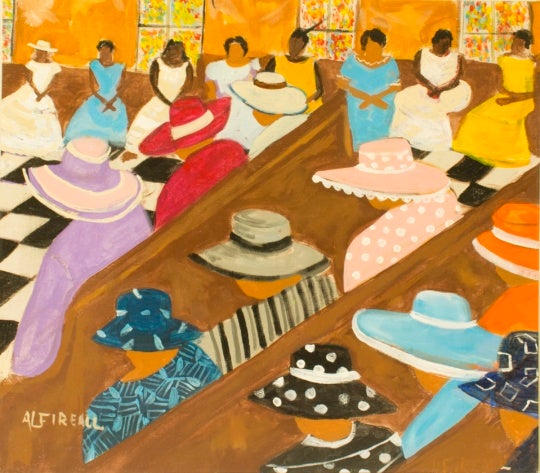

How Low Can You Go? Anthology of the String Bass, by Dust-to-Digital Recordings
Measuring approximately six and a half feet tall, the string bass, or “bull fiddle,” rose to prominence in the 1920s predominantly for it’s exceptional contribution to jazz music due to its deep tonal qualities and rhythmic possibilities. How Low Can You Go? Anthology of the String Bass (1925-1941) [Dust-to-Digital, November 21, 2006] is a three-disk collection of 79 remastered recordings that feature the popular string bass bands from the 1920s-1940s. As a whole, the anthology demonstrates the talent and musical command of string bassists and the highly enjoyable musical genres that emerged during the bass-slapping era. Included in this box set is a detailed three-part 96 page booklet comprising historic essays, annotations and photographs about old-time string bands and musicians that illuminate the melodious string music of the 20s, 30s, and 40s [Disk One: 1925-1930, Disk Two: 1931-1941, Disk Three: Bill Johnson]. Upbeat jazz rhythms represent the bulk of the anthology with songs such as “Milenberg Joys” on disc one and “St. Louis Nightmare,” on disc three. Other genres are integrated as well: From the expressive blues of “Bull Frog Blues,” to highly spirited swing tunes, and amusing dance band melodies are embodied in tracks like “Brownie’s Stomp.” Additionally, the harmonic tunes of international artists during the era are also exemplified in songs such as “Tiger Tom Kill Tiger Cat, Damblay, Santapie & Rat.” Overall, all 79 songs come together to create a memorable and lively compilation, perfect to revist during the long but delightful summer months in Georgia.
-Edith Braggiotti-Painting


Steve Roden’s …I listen to the wind that obliterates my traces: Music in Vernacular Photographs [1880-1955] by Dust-to-Digital Recordings
…I listen to the wind that obliterates my traces: Music in Vernacular Photographs teleports the reader into another era by invading their senses, visually and audibly, with authentic and antique artifacts. The 184 page hardback book comprises 2 CDs, which feature 51 vintage recordings from 1925-1955, as well as 150 sepia photographs reproduced in full-color.
This Dust-to-Digital book functions as a testimony to our technologically evolving time in relationship to our often nostalgic perspectives towards history. The included quote by Walter Benjamin captures the notion distinctly: “The acquisition of an old book is its rebirth.” With author Steve Roden’s compilation of works and writings, many historic musical moments are reborn upon the pages and through your speakers.
The first track of disk one opens with plain, howling, and gusting winds, preparing the listener for an organic experience. The following tracks are filled with crackling, shaking soul, and heavy with historical weight: Artists such as John Jacob Niels, Eva Parker, and even anonymous composers are featured. The strings of instruments play and headline the compositions, but leave our ears just enough space to hear the accompaniment of strong, breathy vocals.
These collections of 78rpm recordings are placed alongside short excerpts from a variety of literary sources. The two CDs encompass an assortment of recordings, including amateur recordings, regular commercial releases, and early, almost primal sound and field recordings. The book lacks a strict narrative structure, yet thrives from its collision of literary quotes—by writers such as Hamsun, Lagarkvist, Wordsworth, and Nabokov—and the essay by author Roden himself. A recording of an American cowboy ballad is contrasted with a Russian poet’s erudite vision, which is layered onto an atmospheric recording of summer crickets. A sense of wonder between words, images, and sound in …I Listen to the Wind that Obliterates my Traces: Music in Vernacular Photographs carries this production throughout.
-Dasha Vzorov
Remains Street by Robert Beatty and Institute 193
Remains Street Issue 4 [December 2011] by Robert Beatty—published by Institute 193 out of Lexington, KY—looks not unlike a free handout, printed in black and white and no thicker than an informational booklet. However, the monochromatic publication opens up into an imaginary world of melting desert landscapes littered with digital vocabulary and figures that feel like the blob met Edvard Munch. The only text within the zine’s pages is an introduction written by Institute 193’s Phillip March Jones. In his intro, Jones links the publication to Beatty’s exhibit at the Institute in 2011, Cream Grid Reruns [July 21 – September 24, 2011], a “synesthesia-invoking installation exploring the intersections of technology and imagination.” The images in Remains Street fall neatly under that same description. Beatty, who’s most well known for his work in music, distorts and appropriates classic analogue images alongside hand drawn art. Like some of his prior album art, Remains Street brings together technology and imagination to create work that transports the viewer to an alternate world.
-Alix Taylor

SPUD CRAZY by Nick Tosches and J.T. Dockery for Institute 193
Spud Crazy, also published by Institute 193, arrived at our BURNAWAY office as an envelope filled with a multimedia narrative experience. The text, by Nick Tosches, was originally published as a script in The Nick Tosches Reader before being adapted by J.T. Dockery as an excerpted graphic novel within the pages of Spud Crazy. The text and images work side-by-side conflating the spud and the gam, potatoes and the female figure, against a backdrop of debauchery, back alleys and cigarette smoke.
The package, a glassine envelope, includes both the physical book and a CD of the imagined soundtrack, which paired with frame by frame action makes the project feel more film than book. The audio component is appropriate given the nature of the text itself, a Tosches mash-up featuring fragments of the author’s poems sampled within the narrative and sometimes lain end to end, creating new meaning in their remix.
-Alix Taylor
House rules for commenting:
1. Please use a full first name. We do not support hiding behind anonymity.
2. All comments on BURNAWAY are moderated. Please be patient—we’ll do our best to keep up, but sometimes it may take us a bit to get to all of them.
3. BURNAWAY reserves the right to refuse or reject comments.
4. We support critically engaged arguments (both positive and negative), but please don’t be a jerk, ok? Comments should never be personally offensive in nature.




